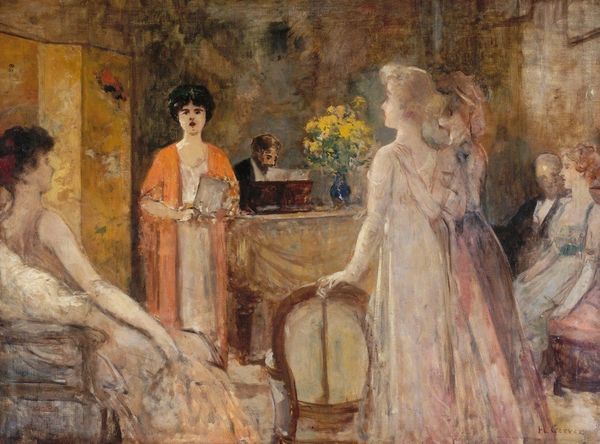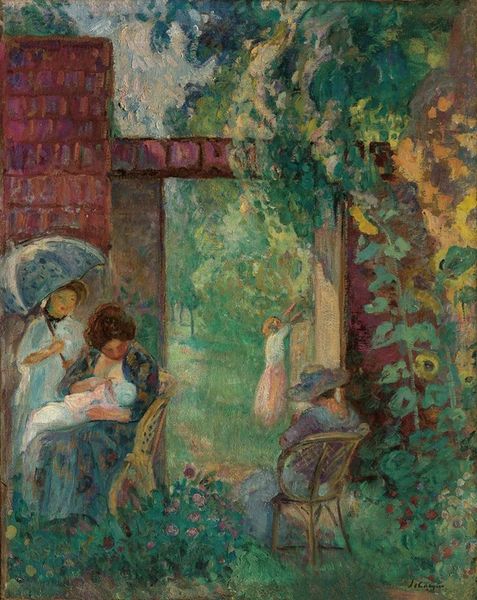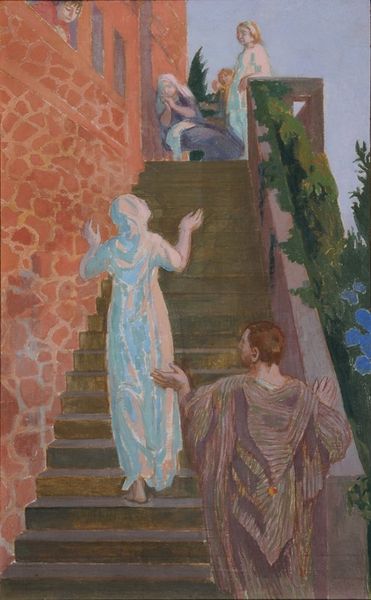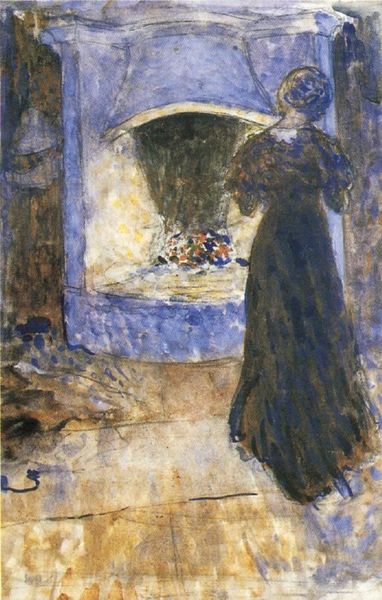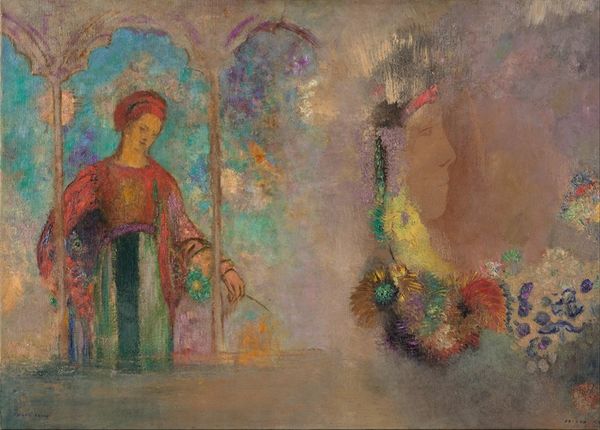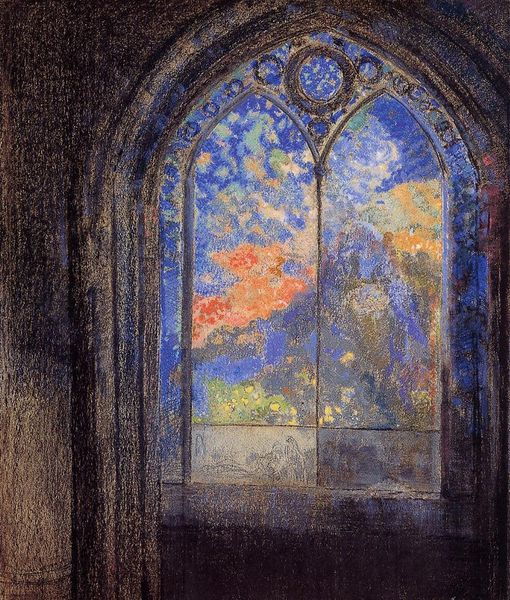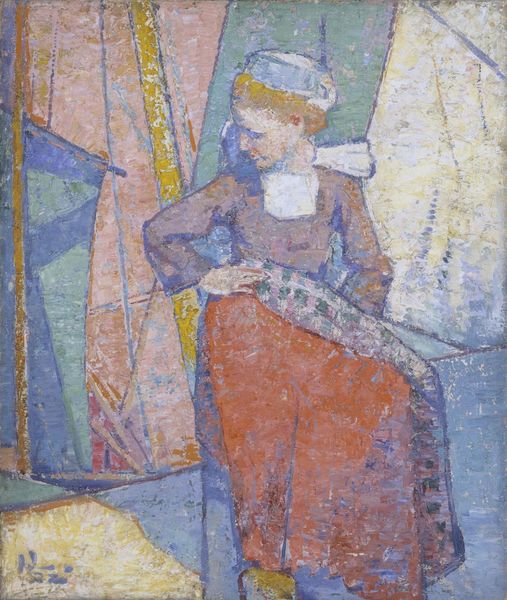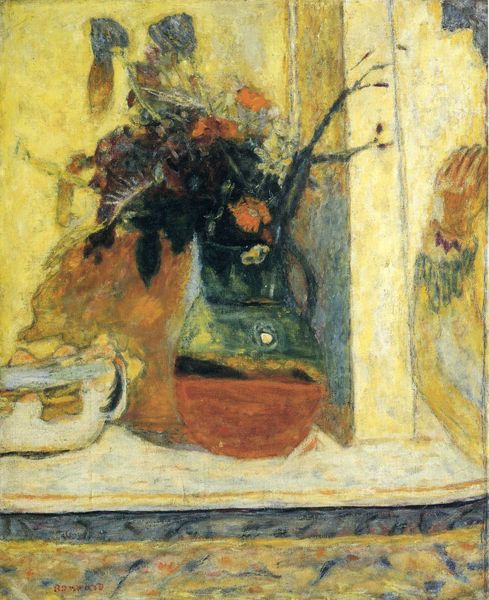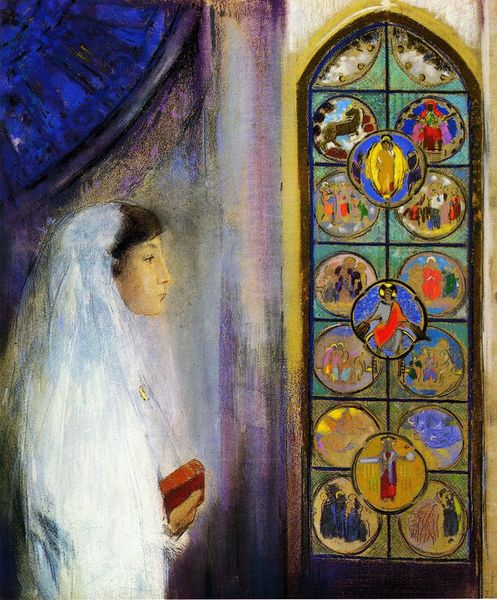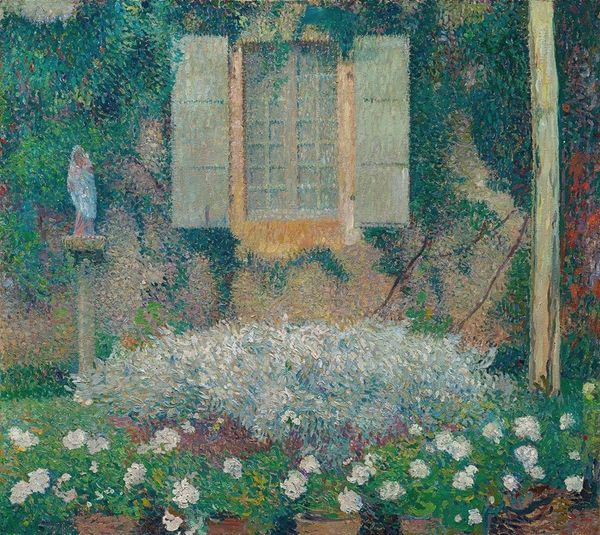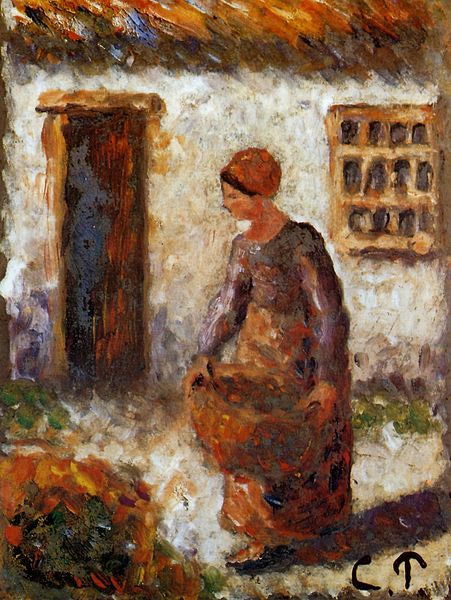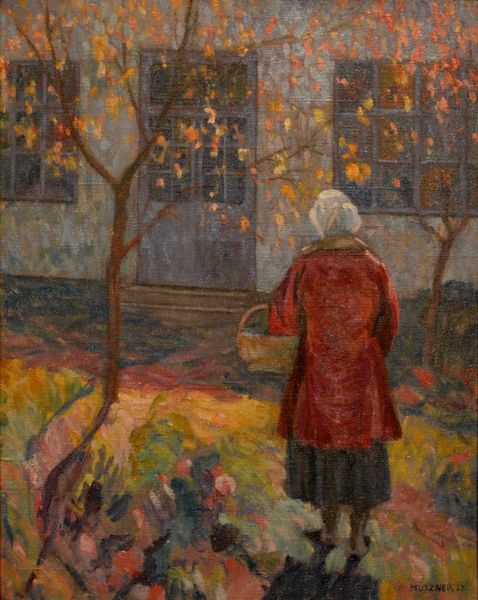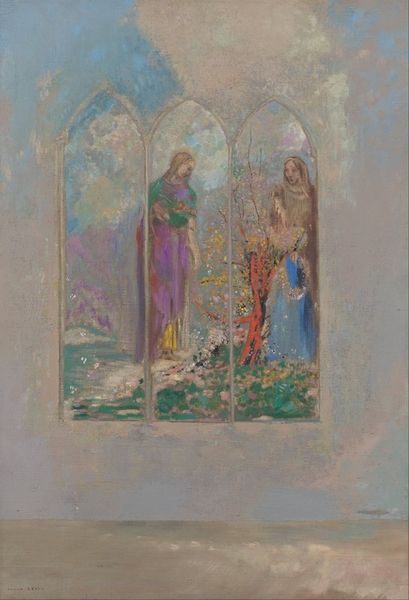
tempera, painting, oil-paint, mural
#
allegories
#
narrative-art
#
tempera
#
painting
#
oil-paint
#
landscape
#
figuration
#
oil painting
#
les-nabis
#
symbolism
#
mural
Dimensions: 74.6 x 48.2 cm
Copyright: Public domain
Editor: So, this is Maurice Denis's "The Annunciation under the Arch with Lilies," painted in 1913, likely in oil and tempera. There's something so serene about the palette, yet the scene is charged. What do you see in this piece, beyond the surface-level narrative? Curator: Beyond the immediately recognizable biblical narrative, I see Denis using the Annunciation as a potent symbol, one that resonates with shifting societal roles and spiritual inquiry during the early 20th century. Consider how the composition frames Mary – is she passively receiving news, or actively contemplating her role in this divine plan? Editor: That's a really interesting point. She does seem quite grounded and self-possessed. Curator: Exactly. And what about the arch itself? Notice how it both separates and connects Mary to the outside world, to the divine messenger. Arches often represent transitions. Think about the changing roles of women at the time and the questions it raises. Could this domestic, almost idyllic setting, juxtaposed with the momentous spiritual event, be interpreted as Denis commenting on the place of women at the time? The lily, a symbol of purity, isn't just a detail, it's part of a larger conversation. Editor: I hadn't thought about the social context so deeply, only in terms of pure aesthetics, such as the style. So he uses symbolism of place, and Mary as representation, I like that view on societal shifts within the scene. The colours also amplify it for me, and seem symbolic. Curator: Absolutely. By situating this sacred event within a visually modern landscape, Denis invites us to contemplate the intersections of faith, gender, and societal change. He seems to be prompting viewers to look with awareness at how tradition and progress, in a social-political sense, come together. Editor: That reframes everything for me; the composition feels much more deliberate. Thanks, that context really enriched my understanding. Curator: And for me, it's the conversation that keeps these historical pieces vibrant and relevant. There’s always room to analyze from fresh, societal angles!
Comments
No comments
Be the first to comment and join the conversation on the ultimate creative platform.
